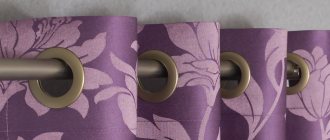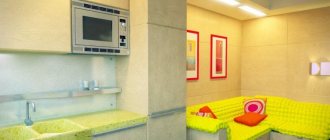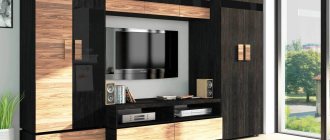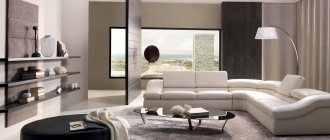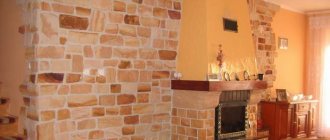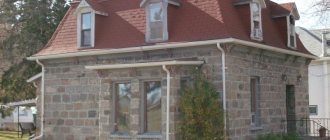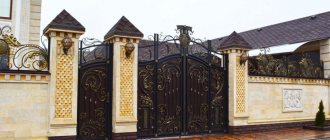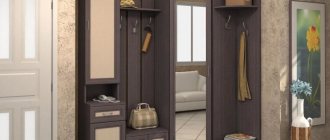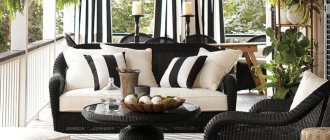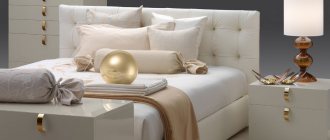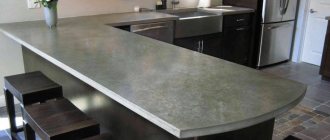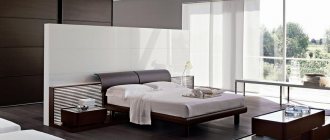Walls are usually finished with MDF or PVC panels, non-woven, paper types of wallpaper, but recently textured plaster has taken a significant part of the market. Designers of various levels appreciated its unique qualities. With its help, you can create something unique based on the imagination and skills of the master. Among its types, the bark beetle stands out because it allows you to create the most interesting wall decorations.
Next, we will figure out how to work with bark beetle in order to make the most of the properties of this finishing material. Let's touch a little on the history of its appearance and talk about its characteristics.
This type of plaster was first used in the West, but it did not appear in Russia for a long time. But towards the end of the 90s, it gained popularity in the domestic market as a universal finishing material for working with facades, walls and ceilings of the interior of premises based on the finishing stage of work.
Domestic consumers noted its reasonable price and ease of application to any surface. You can see photos of bark beetle plaster based on various design ideas. It got its name due to the formation of similar patterns with a cut of wood that the beetles feasted on.
Characteristics of the "Bark Beetle"
The material does not require high qualifications when working with it, is in no way inferior to other finishing materials during operation and gives the house an exquisite appearance. In addition, its texture allows you to hide defects in wall coverings.
The base of the plaster is gypsum or acrylic. Packaged in the form of a ready-to-use mixture or powder. Marble chips with a grain size of 0.08-0.35 cm are added to the mixture. This component gives the coating a grooved relief.
Most often, this plaster is used to cover the façade of a house. The color of the material is light shades, so after plastering the facade is painted, choosing a color to taste.
How to properly coat the surface?
The whole process is divided into two stages. Let's look at the nuances:
Work is carried out from the bottom corner on the right side, gradually moving to the top, carefully leveling the material over the surface. It is necessary to ensure the formation of a layer the size of a liquid granule. To do this, focus on the grooves or scratches that appear.
You can use a spatula and grater at 60 degrees relative to the surface. After completion, you need to wait until the material dries to begin forming the desired texture.
The selected texture option is easily created with a grater or plastic trowel. Any of the tools is pressed against the material and pressed slightly into it. The required pattern will be formed using the master’s dexterity of movements using the prepared material:
Using intermittent circular movements with a grater, you can form the classic shapes created by a beetle on a wood base. To do this, you need to press the tool a little and use circular or arcuate movements in all directions to create a pattern.
The pattern called “travertine” is created based on short and slightly jerky movements. They must be performed using a trowel, moving it in all directions in order to create an imitation of the presence of a stone.
To create a pattern called “cork” you will need a polystyrene foam trowel. To do this, intensive circular movements are performed in one direction. It is recommended to maintain a small radius of movement of the tool.
An imitation of fabric texture is created using cross-shaped movements of a grater. The tool moves from bottom to top based on average speed. Horizontal lines are applied with one quick stroke.
You can form a pattern called “rain” using continuous diagonal movements from top to bottom, starting from the top right side to the bottom left side.
Important: When the work is finished and a full-fledged pattern has formed, it is necessary to erase the unsightly places at the joints and slightly level the entire surface without significant pressure on the pattern.
In general, imitating a surface similar to the natural version created by a beetle on a tree is not particularly difficult. Domestic craftsmen most often use Ceresit bark beetle plaster, since it is offered on the basis of many types, and it is always easy to select the necessary finishing material. You can work with it on walls, facades or ceilings.
If it is difficult for you to choose the necessary material for one of your design ideas, you can use a catalog of bark beetle plaster in the interior from a popular brand or a reputable store. Thus, you can quickly find what you want to see on the surface outside or inside the building. We hope that you will have excellent results after using this finishing material. And you will often resort to his help.
Material advantages
- Mechanical strength and no harm to the environment. The starting components of plaster are only natural materials.
- Light weight. Reduces the load on the supporting structures of the house due to light mineral fillers.
- The ability not to lose strength, moisture-proof and color characteristics over a long period of operation.
- Fire resistance, ability to withstand open fire.
- Variety of colors. Choosing the right bark beetle color for the facade will not require significant labor costs. Ability to resist mold fungi.
- Attractive prices and a wide range of pricing solutions.
Disadvantages of the material
- If the coating is damaged, it is very difficult to repair it. To do this, it is necessary to remove the damaged layer of plaster and reapply it.
- Application technology requires professionalism. In this case, a special trowel is used.
- It is quite difficult to remove contaminants from a surface plastered with “Bark Beetle” and having a complex topography.
Varieties of "Bark beetle"
Manufacturers offer two types of bases - gypsum and acrylic.
The acrylic-based mixture is applied using special technologies and requires a professional approach. This composition fits well on concrete and surfaces made of cement-bonded particle boards.
Painting acrylic-based plaster requires the use of computer technology and special machines. May contain mineral chips, the grain size of which is 0.1-3.5 mm.
Manufacturers guarantee the service life of such coatings for at least 15 years. After drying, it becomes resistant to adverse external influences.
The color of the coating is selected in advance, after which painting is not required. However, applying such a coating requires special knowledge and experience.
Gypsum-based bark beetle is more economical and less difficult to use. To work, you need to prepare a solution by mixing the dry composition with water.
It is applied to the walls manually, and no high qualifications are required, that is, finishing the facade with your own hands is quite simple. The material is durable, and its price is not high.
There are two varieties of bark beetle. The binder can be silicate or silicone compounds. The first is characterized by resistance to microorganisms and vapor permeability. The second is chemical resistance.
Color and design
The pattern that appears on the surface during plastering works serves as a decoration for the room and is itself a decor. In the case when the bark beetle mixture is initially white, you can achieve the desired shade in two ways:
- Add pigment to the solution.
- Perform subsequent staining.
The color palette for caricature is selected taking into account the planned design. These can be either pastel or bright shades. Bark beetle can be successfully used in various eco-styles.
Painting on the walls is an unusual and attention-grabbing design technique
Coloring
In the case of gypsum-based plaster, any coloring substance can be added to the dry mixture. If the plaster is acrylic-based, then painting should be done with great care, otherwise the color may be overly saturated.
After plastering, the surface can be coated with enamel on a base similar to plaster. Today, brown, beige and yellow colors are popular.
However, the color of the house should be in harmony with the color scheme of the entire site. Experts recommend using several colors when painting your home, including gray and green.
Popular manufacturers
Ceresit, Baumit and Dufa are the most popular among consumers. The use of plaster from these manufacturers does not require high qualifications and time spent on preparing the mixture.
The plaster of the Unis consortium, which also includes domestic manufacturers, is particularly successful. It is produced both in the form of a dry mixture and in a ready-to-use form. Resistant to fungi, ultraviolet radiation and frost.
Consumption rates
Before work, you should calculate the amount of mixture required as accurately as possible. Otherwise, the excess will become unusable, and the deficiency will lead to a disruption in the texture when the solution is re-applied.
It should be noted that if the wall is uneven, then the layer of plaster must be increased. The packaging of the mixture always indicates the approximate consumption, on average it is up to 3 kg per 1 sq. m. m of surface.
Subtleties of choice
The main advantages of a plastered wall surface are practicality, environmental friendliness, and durability. This decor combines harmoniously with other types of decoration. In addition, this coating will provide additional sound insulation of the walls.
It is worth mentioning some of the disadvantages of such solutions. The lowest consumption fractions are high in cost of work and wall preparation. It should be noted that a quick repair will not work. Many decorative plasters take a long time to dry. The only way out is to add color to the solution.
These four nuances will determine how the walls in your kitchen will look after finishing:
1. Quality of pre-finish surface preparation: the smoother the surface, the stronger the adhesion of the composition and the more uniform the application.
2. Type, shape of filler, type of granules. The market offers decorative finishing compositions with stone chips, synthetic granules, acrylic resins, and cellulose fibers. The texture of the coating depends on the structure of the additive: granular, embossed, convex or grooved, ideally smooth.
3. Methods of applying the composition (strokes, circles, strokes, vertically, horizontally) and devices. The smooth base is usually spread with a spatula or paint roller. Relief textures are created with sponges, smoothers, applicators and other devices. The same smooth layer can be decorated in different ways.
4. If the kitchen is in a new building, then before shrinking you can choose embossed wallpaper made of non-woven or vinyl. Do not forget that the plaster may crack as it shrinks.
Coating technology
Finishing the facade is the final and most important stage of construction, because the impression of the house depends on it.
Stages of work:
- Installing beacons and leveling the surface.
- Primer. A solution with increased adhesion is considered the best.
- Facing. This is done with a spatula. Preference should be given to coarse-grained compounds
- Areas not to be covered are covered with masking tape.
- Creation of the required texture. It is created with a special grater, which is used to process the wet surface of the plaster. The process is similar to conventional puttying, but in our case the solution is “smeared” until grooves form. If it sticks to the grater, the mixture must be allowed to dry.
- Varnish coating. Gives the surface an attractive appearance and protects it.
Plaster composition
The beetle's bark contains quite heavy minerals. Therefore, the consistency requires greater viscosity compared to other plasters. To do this, additional mineral additives and polymers are added to the bark beetle. They provide excellent adhesion of the plaster to the base. This is a very light, practical and durable material. Despite the differences in composition between different manufacturers, one component remains unchanged - granules. They definitely create a unique pattern.
The size of the granules (or, as they are also called, fractions) can vary depending on the type of plaster. As a rule, small fractions are used for interior finishing, and large fractions are used for exterior finishing. But in reality it all depends on your preferences and ideas. Mixes with finer granules are more expensive because they use a complex filtration process to produce them.
Finishing
Bark beetle finishing is mainly used in low-rise construction. This finishing method allows you to give the building a unique look.
To make an error-free choice of coating technology and design, it is recommended to familiarize yourself with photos of beautiful bark beetle facade decoration posted on the Internet. For example, giving the house an "antique" feel. To do this, use plaster of dark colors and create the appropriate surface texture. The effect can be enhanced by a brick plinth, columns and a wide staircase.
A classic design will require understated elegance and simplicity. The coating is carried out with acrylic plaster of light colors. A tiled roof and brick gazebos will complete the impression.
For small buildings, a combination of plaster with natural materials is recommended. For example, inserts made of wood and natural stones harmonize well with a tiled roof, flower beds and shell paths.
Designers recommend plastering all loggias and terraces in the same way, but using different colors. This will highlight every architectural detail of the building and emphasize its individuality. At the same time, they stick to brown and light beige shades. Each floor of the house can be painted in different colors, and a wide staircase with carved railings will give the building an original and attractive look.
Where can I use it?
Bark beetle coating can be used to decorate building facades and perform interior work. Plaster on the outside of buildings is used to cover and decorate the walls of private and multi-apartment buildings, both office and residential.
In interior design, bark beetle is used mainly for covering walls, decorating arched openings and columns. But it can even be used on the ceiling. The types of bark beetle plaster are very diverse, and they can be conditionally divided by area of use - universal, for facades and for indoor work.
The use of bark beetle can emphasize the style of the entire building
